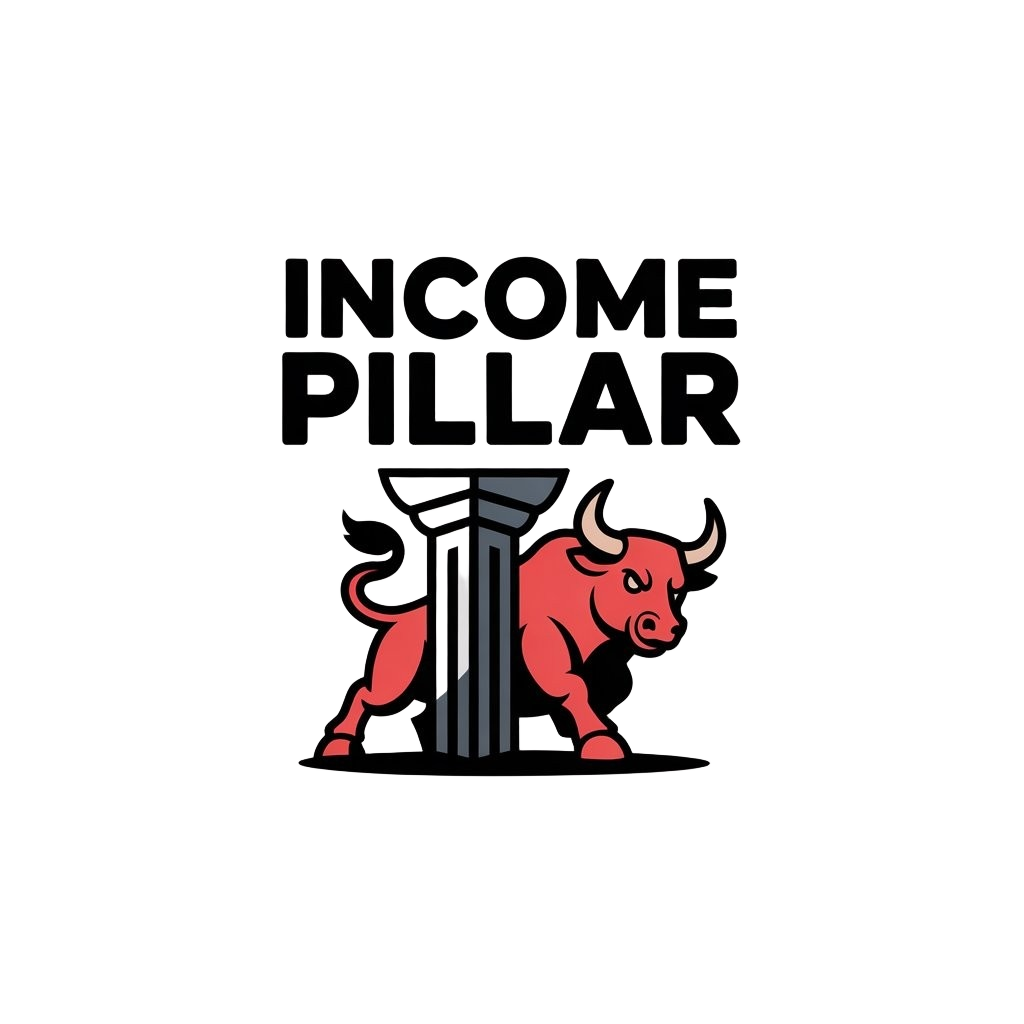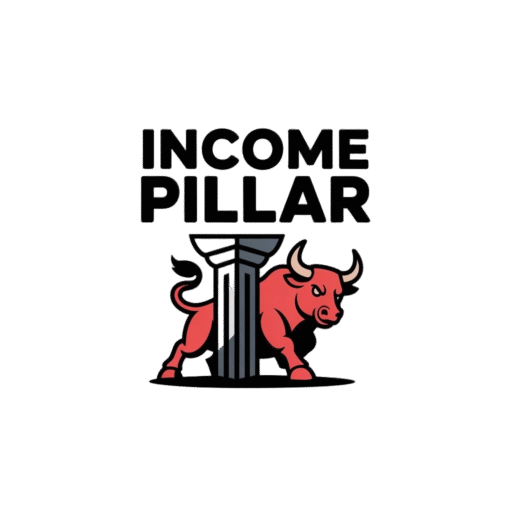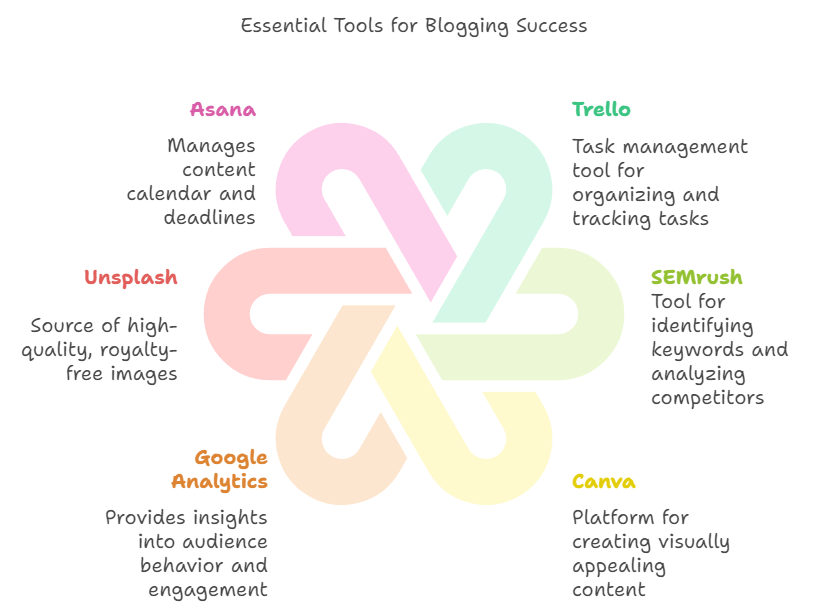Introduction
Blogging is more than just writing—it’s about creating a structured workflow that transforms ideas into engaging content while catering to both audience needs and search engine requirements. A well-defined blog workflow streamlines every step, from brainstorming to publishing, ensuring consistency and quality. By leveraging tools like Trello and SEMrush, bloggers can stay organized and optimize their posts for discoverability and engagement.
Incorporating trends, repurposing content, and analyzing performance through tools like Google Analytics are key strategies to maximize reach and impact. This comprehensive approach not only simplifies the blogging process but also ensures your content remains relevant and effective in a competitive digital landscape.
Key Takeaways
- A structured blog workflow ensures consistent, high-quality content creation from idea to publication.
- Tools like Trello, SEMrush, and Google Analytics simplify organization and improve content effectiveness.
- Optimizing for SEO and user engagement boosts discoverability and audience retention.
- Staying updated on trends keeps your content relevant and appealing to readers.
- Repurposing blog posts into multiple formats amplifies reach and content value.
- Analytics-driven strategies enable continuous improvement and growth for your blog.
Mastering the Blog Workflow: From Idea to Execution
A well-structured blog workflow is essential for turning ideas into impactful blog posts. By starting with clear objectives and understanding your audience, you can brainstorm engaging topics that resonate. Effective keyword research and an editorial calendar streamline the process, ensuring deadlines are met and posts align with audience expectations. Tools like Trello or Asana can help track progress, while templates simplify the drafting phase. From initial brainstorming to hitting publish, mastering a blog workflow ensures consistency, saves time, and enhances the overall quality of your content. This structured approach fosters creativity and keeps your blog posts aligned with broader content marketing strategies.
Essential Tools to Simplify Your Blog Workflow
Efficient blog workflows are powered by the right tools. Platforms like Trello and Asana enable bloggers to organize tasks and deadlines effectively. Editorial calendars help streamline content planning, while keyword research tools like SEMrush ensure topics align with user searches. Templates provide structure for drafting, reducing time spent on repetitive tasks. By leveraging these tools, bloggers can maintain a consistent posting schedule and focus on crafting high-quality content.
Breaking Down the Blog Workflow into Manageable Steps
Managing a blog workflow becomes easier when divided into steps. Start with brainstorming and keyword research, followed by outlining and drafting your post. Use high-quality visuals from sources like Unsplash to enhance readability. After editing and proofreading, publish the content and promote it on platforms like LinkedIn. Finally, monitor performance with Google Analytics to refine your approach for future posts.
Must-Have Tools for an Effective Blog Workflow
1. Trello for Task Management
Trello is a versatile project management tool that helps bloggers track their workflow efficiently. Its drag-and-drop interface makes it easy to organize tasks, set deadlines, and monitor progress. Using Trello ensures your blogging process stays on track from start to finish.
2. SEMrush for Keyword Research
SEMrush is essential for identifying high-volume keywords and analyzing competitor content. This tool provides insights into search trends, helping you create SEO-optimized posts that rank higher in search results.
3. Canva for Visual Content Creation
Creating eye-catching visuals is simple with Canva. From blog graphics to infographics, Canva offers templates and tools to elevate your content’s visual appeal.
4. Google Analytics for Performance Tracking
Google Analytics provides invaluable insights into audience behavior. Use it to monitor traffic, bounce rates, and engagement metrics to refine your blogging strategy.
5. Unsplash for High-Quality Images
A blog post’s visual appeal is enhanced by high-quality images. Unsplash offers a library of royalty-free photos that can bring your content to life without extra costs.
6. Asana for Editorial Calendar Management
Asana helps bloggers plan their content calendar and keep deadlines organized. With its collaborative features, it’s perfect for managing a team or solo workflows.
Optimizing Content Creation for Search Engines and Engagement
Creating blog posts optimized for search engines and user engagement requires careful planning. Integrating SEO best practices, such as using targeted keywords, writing compelling meta descriptions, and optimizing internal links, improves discoverability. High-quality content that provides value, supported by visuals sourced from platforms like Pexels or Unsplash, keeps readers hooked. Adding CTAs and ensuring mobile-friendly formatting enhances engagement and conversions. With a focus on analytics, bloggers can refine their approach based on audience behavior, ensuring the content remains relevant and effective. This process bridges technical SEO with human-centric content strategies.
Crafting SEO-Friendly Content Without Compromising Quality
Balancing SEO and quality content is crucial. Optimize your blog post with relevant keywords, engaging meta descriptions, and logical internal links. Include images with proper alt text and ensure your content is mobile-friendly. However, focus on delivering value to readers by addressing their pain points and interests, which naturally boosts engagement and retention.
Writing Compelling CTAs That Convert Readers into Followers
A strong call-to-action (CTA) drives audience engagement. Use action-oriented language and align the CTA with your blog’s purpose, such as subscribing to a newsletter or exploring additional resources. Position CTAs strategically within your post to guide readers seamlessly toward the next step while maintaining a natural flow.
Case Study: How a Blogger Increased Traffic Using a Streamlined Workflow
A lifestyle blogger struggling to maintain consistency decided to adopt a structured blog workflow. Using tools like Trello for task management and SEMrush for keyword research, they streamlined their content planning process. By creating an editorial calendar, they ensured posts were consistently published and aligned with trending topics.
After integrating Google Analytics into their strategy, they tracked audience engagement and identified posts that resonated most. This insight guided the creation of similar high-performing content. Additionally, they repurposed popular posts into social media snippets and newsletters, further extending their reach.
Leveraging Trends and Analytics to Drive High-Quality Blog Posts
Keeping up with trends and leveraging analytics is key to crafting blog posts that capture attention. By analyzing data from Google Analytics and tools like Search Console, bloggers can identify what works and where improvements are needed. Incorporating trending topics into your editorial calendar ensures your blog stays fresh and relevant. High-quality blog posts are a blend of creativity, data insights, and adaptability to audience interests. Engaging with social media trends or collaborating with influencers can amplify your reach, while analytics provide clarity on what resonates, driving continuous growth and improvement.
Using Analytics to Tailor Your Blog Strategy
Analytics tools like Google Analytics and Search Console offer insights into audience preferences and behavior. Track metrics such as page views, bounce rates, and session durations to identify areas for improvement. Adjust content topics and formats based on these insights to create posts that resonate with your audience and achieve better results.
Incorporating Trends to Keep Your Content Relevant
Staying updated on trends ensures your blog remains timely and engaging. Monitor trending topics on social media platforms and integrate them into your content strategy. Collaborate with influencers to amplify visibility and leverage user-generated content for a fresh perspective. These approaches boost audience interest and improve your blog’s relevance.
“Success in blogging isn’t about working harder; it’s about working smarter with the right tools and strategies.” — Neil Patel
Repurposing and Promoting Content for Maximum Reach
Repurposing and promoting blog content maximizes its value and extends its lifecycle. Transforming blog posts into social media snippets, newsletters, or infographics makes content versatile and accessible. Using tools like Asana or Trello ensures these tasks are managed efficiently. Promotion through LinkedIn, newsletters, and other social channels drives visibility, while internal links and affiliate references add depth. Repurposing saves time and resources, allowing bloggers to amplify their message across multiple platforms. By strategically promoting content, bloggers can engage with diverse audiences, enhancing both reach and brand awareness.
Creative Ways to Repurpose Blog Content
Repurposing blog content allows you to reach different audiences across platforms. Turn detailed posts into infographics, snippets for social media, or even video tutorials. Use tools like Canva for visual elements and Airtable to track repurposing efforts. Repurposing not only saves time but also expands your content’s potential impact.
Strategic Promotion Techniques to Expand Your Blog’s Audience
Effective promotion is key to driving blog traffic. Share your posts on LinkedIn, Twitter, and newsletters to engage with varied audience groups. Use affiliate links and reference connections to boost visibility. Paid promotions and collaborations with influencers can further amplify your reach, ensuring your content gains the recognition it deserves.
Conclusion
A robust blog workflow is the backbone of successful content creation, helping bloggers navigate the intricate process from idea generation to publishing. By focusing on audience needs, keyword optimization, and leveraging tools like Trello and SEMrush, bloggers can produce high-quality, engaging posts that resonate and perform well on search engines. This structured approach ensures consistency, creativity, and efficiency.
In addition to workflow mastery, integrating trends, analytics, and repurposing strategies extends the reach and lifespan of your content. By refining your process and embracing these practices, you not only streamline your blogging journey but also enhance your ability to connect with readers and grow your blog effectively.



















